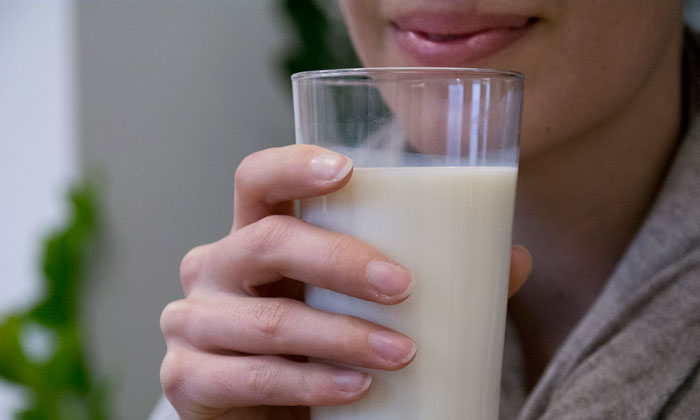Vitamin A in cattle fodder might protect infants against cow’s milk allergy
Posted: 7 February 2018 | George Smith (New Food) | No comments yet
A metabolite of vitamin A has been shown to prevent the reaction to beta-lactoglobulin responsible for cow’s milk allergy.


MOOVING FORWARD: Cow's milk allergies do not generally affect adults, whereas lactose intolerance does Photo: Georg Mair/Vetmeduni Vienna
Green fodder in cattle feed might be the key to protecting infants against cow’s milk allergy – the most common type of food allergy in young children.
A inter-university team of researchers at the Messerli Research Institute of Vetmeduni Vienna, Meduni Vienna and the University of Vienna have found that loading vitamin A metabolite retinoic acid into milk can help prevent a reaction to the protein beta-lactoglobulin, or Bos d 5.
A real milk allergy occurs in about three to five per cent of European children and more rarely in adults. The disease is different from lactose intolerance, in which a lack of the enzyme lactase results in the inability to properly break down lactose, a sugar found in milk products.
In the case of a milk allergy, the immune system itself reacts with a distinct immune response against the milk proteins. Specialised immune cells are formed which produce antibodies against the milk proteins and so trigger a potentially much more dangerous allergic reaction.
A study, published in Scientific Reports, has shown that the components of the cow’s milk itself can help to prevent this reaction. The key is that the milk protein beta-lactoglobulin, a relevant agent for allergic reactions, literally “pockets” a metabolite of vitamin A called retinoic acid. This would require cows to receive a sufficient supply of this vitamin, for example, through an abundance of green fodder.
If infants become allergic to cow’s milk, their bodies produce so-called Th2 lymphocytes. These are specialised immune cells that produce antibodies to fight milk proteins as part of the immune system.
One of the most important of these so-called milk allergens is the protein Bos d 5. Also known as beta-lactoglobulin, it is part of a family of proteins known as the lipocalins. “This special protein family is characterized by molecular pockets that can take in small molecules like retinoic acid, which is a metabolite of vitamin A,” said First Author Karin Hufnagl.
Study Leader Erika Jensen-Jarolim added: “Our study showed that an ’empty’ milk protein supports the activation of Th2 lymphocytes and so initiates an allergic chain reaction,” says Hufnagl. However, if it, so to speak, pockets the retinoic acid, then the immune cells react moderately, without an allergic immune reaction. “An adequate loading of the milk protein could thus prevent that small children or even adults become sensitized and express a milk allergy.”
Milk, and above all cow’s milk, is an important food product for most people. For allergy patients, however, it poses a risk. Besides causing a swelling of the mouth or the mucous membranes, other symptoms can include diarrhoea or aggravated atopic dermatitis, and, in rare cases, can even induce an allergic shock.
“A sufficient supply of vitamin A to the milk producers, i.e. the cows, could counteract this effect in which a harmless food protein is converted into a milk allergen,” said Hufnagl.
It is uncertain, however, whether the positive effect of natural vitamin A shown in the study can also be achieved through dietary supplements. “Artificial supplementation of a diet with vitamins may not achieve the same effect as natural agents and will likely result in inadequate loading of the milk allergen. It is therefore necessary to supply vitamin A to an appropriate extent already during the keeping or feeding of the animals. This can be achieved, for example, by increasing the supply of green fodder. Corresponding follow-up studies must still be carried out, however,” the First Author added.
Related organisations
Meduni Vienna, Messerli Research Institute of Vetmeduni Vienna, University of Vienna








